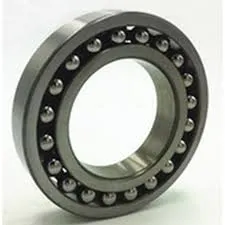
Dec . 05, 2024 14:31 Back to list
deep groove ball bearing load type
Understanding Deep Groove Ball Bearing Load Types
Deep groove ball bearings are one of the most widely used types of bearings in various industrial applications. They are designed to support both radial and axial loads, making them incredibly versatile. In this article, we will explore the various load types that deep groove ball bearings can handle, how these loads affect performance, and their applications in different sectors.
What is a Deep Groove Ball Bearing?
A deep groove ball bearing consists of an inner ring, outer ring, balls, and a retainer. The design of the groove on both the inner and outer rings allows for the accommodation of both radial and axial loads. The depth of the groove helps in distributing loads more evenly across the contact surfaces, which contributes to the bearing's ability to endure higher speeds and loads compared to other bearing types.
Types of Loads on Deep Groove Ball Bearings
1. Radial Loads Radial loads are forces that act perpendicular to the axis of rotation. These loads are often encountered when a shaft is rotating in a vertical or horizontal position. Deep groove ball bearings excel in handling radial loads due to their design that allows balls to roll freely in the groove, reducing friction and wear. The capacity to withstand radial loads makes them ideal for applications like electric motors, conveyors, and appliances.
2. Axial Loads Axial loads act parallel to the axis of rotation. Deep groove ball bearings can accommodate moderate axial loads in both directions. However, if the axial load is too high, it can lead to premature failure. To ensure optimal performance when axial loads are present, it's crucial to consider the bearing's load rating and the application. For example, they are often utilized in applications such as pumps and gearboxes, where axial loads may occur during operation.
3. Combined Loads In many applications, deep groove ball bearings need to handle combined loads, which include both radial and axial forces simultaneously. The ability of these bearings to manage combined loads depends on their design and the orientation of the loads. When dealing with these kinds of loads, it’s essential to refer to the bearing’s load rating and understand the ratio of radial to axial loads to ensure that the bearings perform efficiently without exceeding their limits.
deep groove ball bearing load type

Factors Affecting Load Capacity
1. Bearing Size Larger bearings can generally handle higher loads due to their increased number of balls and a larger contact area. 2. Material The materials used in the manufacture of the bearings, including the cage and balls, can significantly influence load capacity and durability. 3. Operating Conditions Factors such as temperature, speed, and operating environment (e.g., lubrication type, contaminants) can impact the bearing's ability to handle loads effectively.
Applications of Deep Groove Ball Bearings
Due to their versatility in load handling, deep groove ball bearings are used across various industries, including automotive, aerospace, machinery, and consumer electronics. They are found in applications like
- Electric Motors They handle high radial loads and moderate axial loads efficiently. - Automobiles Used in the wheel and transmission assemblies, where both radial and axial load capacities are critical. - Household Appliances Such as washing machines and fans where compact designs are required to manage loads efficiently.
Conclusion
In summary, deep groove ball bearings are instrumental in a wide range of applications due to their ability to manage various load types efficiently. Understanding the nature of the loads they will encounter is crucial for selecting the right bearing type, ensuring longevity and optimal performance. As industries continue to evolve, the demand for reliable and efficient load management through deep groove ball bearings will remain a critical consideration in engineering and design.
Latest news
-
Durable Greenhouse Pillow Block Bearings for Reliable Ventilation
NewsAug.31,2025
-
Spherical Roller Bearings Applications: Heavy Duty, Self-Aligning
NewsAug.30,2025
-
Premium Deep Groove Ball Bearings | High Speed & Reliability
NewsAug.29,2025
-
Durable Scaffolding Clamps - Secure & Reliable Tube Connectors
NewsAug.28,2025
-
Common Failures in Thrust Ball Bearings and Solutions
NewsAug.22,2025
-
How Tapered Roller Bearings Can Take Shock Loads
NewsAug.22,2025
